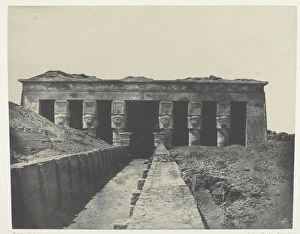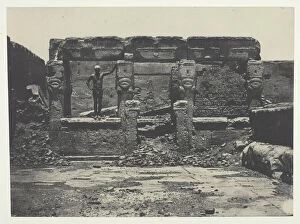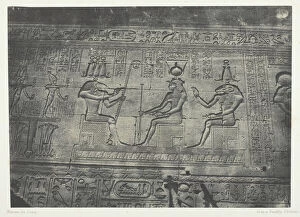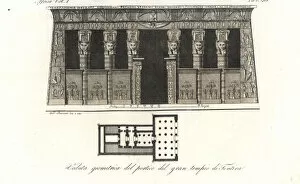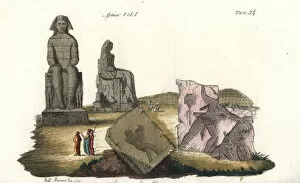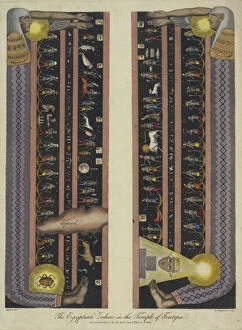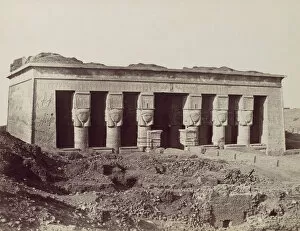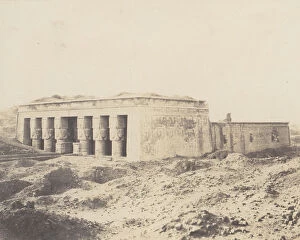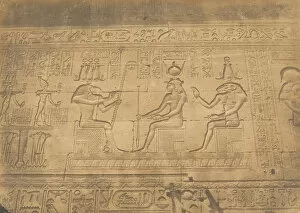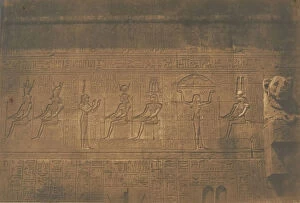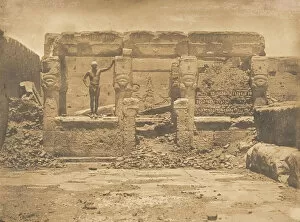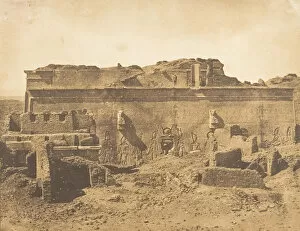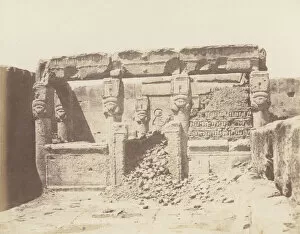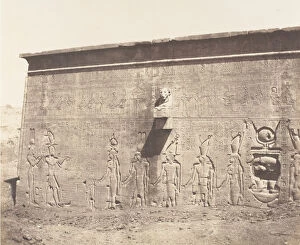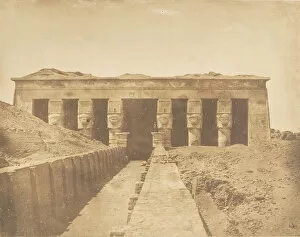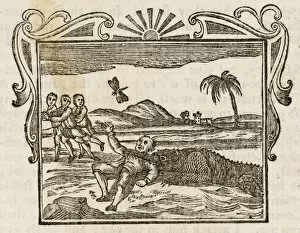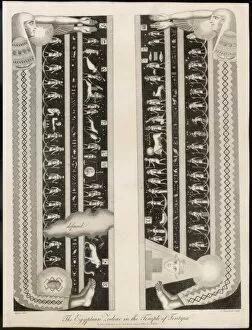Tentyra Collection
Tentyra, also known as Denderah, is a mesmerizing ancient Egyptian temple located in the Upper Egypt region
For sale as Licensed Images
Choose your image, Select your licence and Download the media
Tentyra, also known as Denderah, is a mesmerizing ancient Egyptian temple located in the Upper Egypt region. Built during the years 1849-1851 and printed in 1852, the Grand Temple of Denderah stands tall with its magnificent architecture. The sculptures on the facade of this temple are truly awe-inspiring, showcasing intricate details and craftsmanship. Stepping inside the Temple of Hathor reveals an interior that exudes grandeur and mystique. Its elevation and plan demonstrate a remarkable understanding of Egyptian architectural principles. This temple is just one example of the impressive structures found in both Denderah and Karnak. One notable feature within this sacred space is the Egyptian zodiac, beautifully depicted in a colored engraving. It serves as a testament to their advanced knowledge in astronomy. Throughout history, it has captured the attention of many artists who sought to immortalize its beauty through their work. Antonio Beato's depiction from the 1870s showcases its timeless allure. The Mammisi or birth house at Denderah boasts stunning exterior decorations on its southern face while offering insight into ancient rituals associated with childbirth. Captivating visitors since its creation, Tentyra continues to enchant with its panoramic views such as those seen from Temple d Athor - Vue Generale (1851-52). Bas-reliefs adorning the facade further add to its splendor (1849-50), leaving spectators marveling at their intricacy. As we explore these glimpses into Tentyra's past through various artworks and engravings, it becomes clear why this ancient site holds such significance in our collective history.

